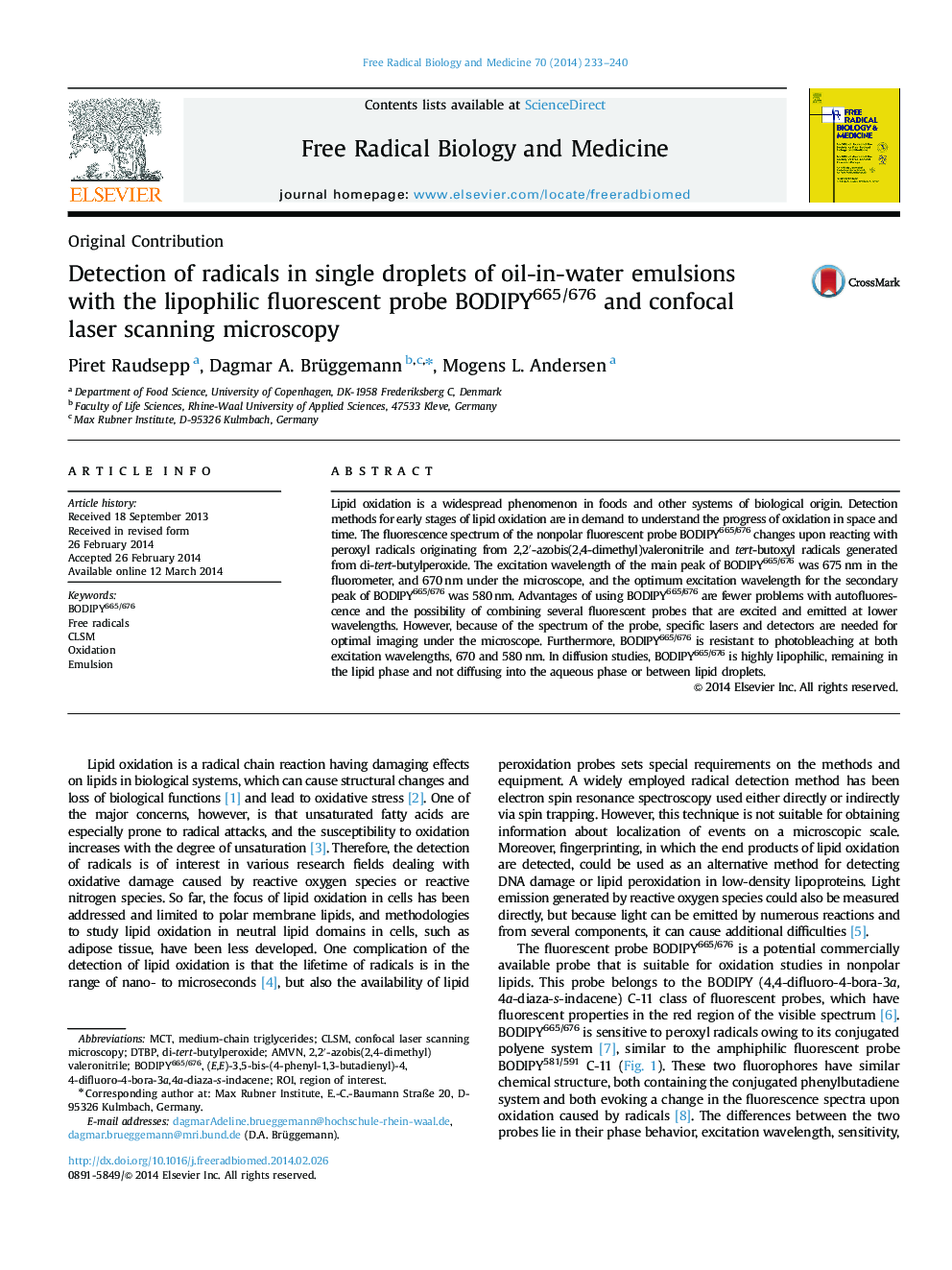| Article ID | Journal | Published Year | Pages | File Type |
|---|---|---|---|---|
| 8270478 | Free Radical Biology and Medicine | 2014 | 8 Pages |
Abstract
Lipid oxidation is a widespread phenomenon in foods and other systems of biological origin. Detection methods for early stages of lipid oxidation are in demand to understand the progress of oxidation in space and time. The fluorescence spectrum of the nonpolar fluorescent probe BODIPY665/676 changes upon reacting with peroxyl radicals originating from 2,2â²-azobis(2,4-dimethyl)valeronitrile and tert-butoxyl radicals generated from di-tert-butylperoxide. The excitation wavelength of the main peak of BODIPY665/676 was 675Â nm in the fluorometer, and 670Â nm under the microscope, and the optimum excitation wavelength for the secondary peak of BODIPY665/676 was 580Â nm. Advantages of using BODIPY665/676 are fewer problems with autofluorescence and the possibility of combining several fluorescent probes that are excited and emitted at lower wavelengths. However, because of the spectrum of the probe, specific lasers and detectors are needed for optimal imaging under the microscope. Furthermore, BODIPY665/676 is resistant to photobleaching at both excitation wavelengths, 670 and 580Â nm. In diffusion studies, BODIPY665/676 is highly lipophilic, remaining in the lipid phase and not diffusing into the aqueous phase or between lipid droplets.
Keywords
Related Topics
Life Sciences
Biochemistry, Genetics and Molecular Biology
Ageing
Authors
Piret Raudsepp, Dagmar A. Brüggemann, Mogens L. Andersen,
